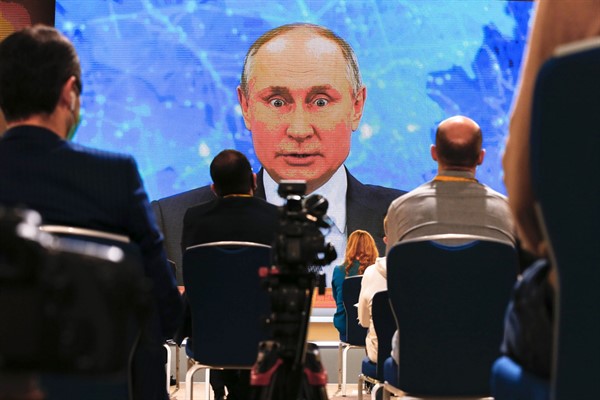Over the past several weeks, there has been nearly as much speculation about the nature and objectives of the Biden administration’s highly vocal approach to warning about the imminence of a Russian invasion of Ukraine as there has been about Russian President Vladimir Putin’s intentions in the current crisis.
The most prominent strain of analysis, by now distilled into broadly held, conventional wisdom, is that by providing detailed, near-daily updates about Russian troop deployments around Ukraine’s borders, including highly specific intelligence and tactical analysis, the Biden administration has been seeking to “get inside Putin’s head,” thereby giving him pause or relegating him to inaction.
If, in the end, Russia does not launch an all-out invasion—or even move to formally occupy the areas of Ukraine that it has already invaded—the approach may come to be regarded as brilliant, as perhaps will the Biden national security team members who settled on it. But this is not the only way to understand the ongoing information warfare around the crisis in Ukraine, nor in my estimation is it the most convincing.

